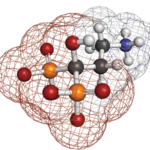TNF Agonists and Mortality
By Daniel Hal Solomon, MD, MPH
Carmona L, Descalzo MA, Pérez-Pampín E, et al. All cause and cause-specific mortality in rheumatoid arthritis are not greater than expected when treated with TNF antagonists. Ann Rheum Dis. Online before print. February 26, 2007. doi:10.1136/ard.2006.067660.
Abstract
Background: Mortality is increased in RA mainly due to cardiovascular events, cancer, and infections. Recent data suggest that treatment with tumor necrosis factor (TNF) antagonists may affect this trend.
Objective: To assess whether treatment with TNF antagonists is associated with reduction in cardiovascular events, cancer and infection rates, and in mortality in RA patients treated compared with those not treated with TNF antagonists.
Methods: BIOBADASER is a registry for active long-term follow-up of safety of biological therapies in rheumatic patients. It includes 4,459 RA patients treated with TNF antagonists. EMECAR is an external RA cohort (n=789) established to define the characteristics of the disease in Spain and to assess comorbidity. The incidence density (IHD) of cardiovascular events, cancer, and infections was estimated and compared in both cohorts. The Standardized Mortality Ratio (SMR) was compared with the rate in the general population. A propensity score was used to match cohorts by the probability of being treated.
Results: Rates of cardiovascular and cancer events are significantly higher in EMECAR than in BIOBADASER (Rate ratio [RR]=5 to 7 for different cardiovascular events, and RR=2.9 for cancer), whereas rate of serious infections is significantly higher in BIOBADASER (RR=1.6). Mortality-rate ratio of BIOBADASER by EMECAR is 0.32 (0.20–0.53) for all causes of death, 0.58 (0.24–1.41) for cardiovascular, 0.52 (0.21–1.29) for infection, and 0.36 (0.10–1.30) for cancer-related deaths.
Conclusion: Morbidity (other than infection) and mortality are not higher than expected in patients with RA treated with TNF antagonist.
Commentary
BIOBADASER and EMECAR researchers investigate a topic of great concern: whether TNF antagonists are associated with excess mortality in patients with RA. Because trials of TNF antagonists are relatively small and short in duration, this question will best be answered by careful epidemiologic studies. To this end, the current analyses compare all-cause and cause-specific mortality among patients with RA treated with and without a TNF antagonist. While we should probably accept the conclusion that there is no greater mortality risk among TNF-antagonist users, the assertion that all-cause mortality may actually be reduced in this group warrants careful inspection.
These investigators have systematically collected data on outcomes in two national registries of RA. BIOBADASER has enrolled TNF-antagonist users and EMECAR synthetic–disease-modifying antirheumatic drug (DMARD) users. Information collected in these two registries is similar but not identical, and many of the same clinical centers participate in both registries. The difficult methodological issue for this analysis is ensuring the comparability of the study groups. While this goal sounds simple, it turns out to be quite difficult even for established epidemiologists. It may even be more difficult in countries where regulators restrict use of expensive TNF antagonists to certain types of patients, almost ensuring that the two groups will not be comparable. These restrictions usually focus on RA disease activity measures. However, even more problematic than non-overlap in RA disease activity is the possibility of different distributions of comorbid conditions. Patients with severe RA who are not prescribed a TNF antagonist often have comorbidities that make clinicians and patients cautious about using an infusion or injectable medication with an incompletely understood side-effect profile.
